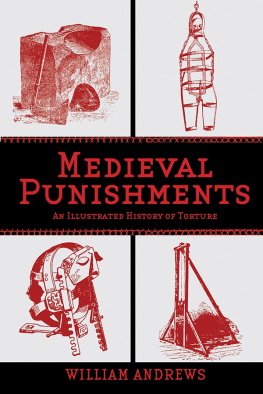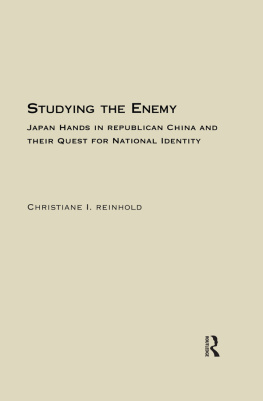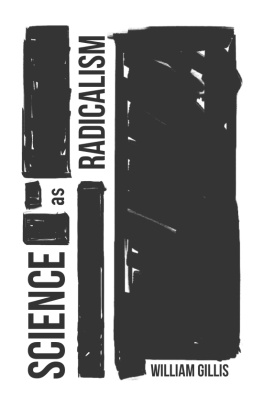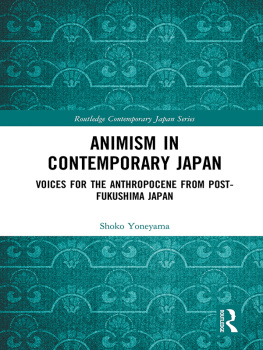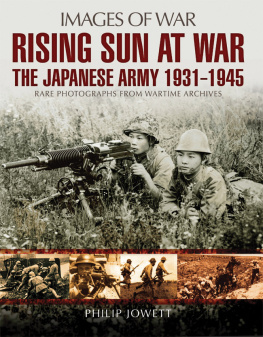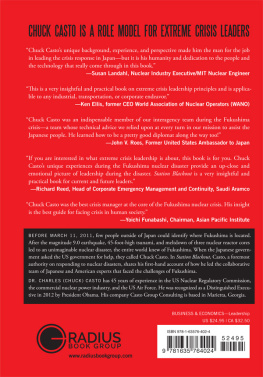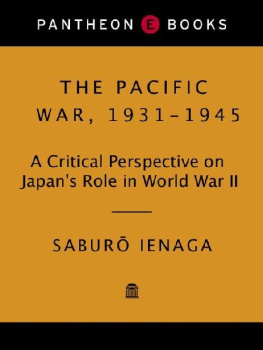DISSENTING JAPAN
WILLIAM ANDREWS
Dissenting Japan
A History of Japanese Radicalism and
Counterculture, from 1945 to Fukushima
HURST & COMPANY, LONDON
First published in the United Kingdom in 2016 by
C. Hurst & Co. (Publishers) Ltd.,
41 Great Russell Street, London, WC1B 3PL
William Andrews, 2016
All rights reserved.
Printed in India
Distributed in the United States, Canada and Latin America by Oxford University Press, 198 Madison Avenue, New York, NY 10016, United States of America.
The right of William Andrews to be identified as the author of this publication is asserted by him in accordance with the Copyright, Designs and Patents Act, 1988.
A Cataloguing-in-Publication data record for this book is available from the British Library.
978-1-84904-579-7 hardback
eISBN 978-1-84904-919-1
This book is printed using paper from registered sustainable and managed sources.
www.hurstpublishers.com
To know and not to act is the same as not knowing at all.
Wang Yangming
Revolutionary events generally take place in the street.
Henri Lefebvre, The Urban Revolution
CONTENTS
I wish to express my sincere thanks to: the Japan Foundation for its library facilities in Tokyo; Patricia G. Steinhoff for being extremely generous with providing unpublished examples of her work and answering my many questions; the staff at the Narita Airport and Community Historical Museum; Jun Nakamura and the Nihon University veterans for being so welcoming; Gasworks for generously supplying the Eric Baudelaire exhibition materials; Marilyn Ivy for her encouragement; Shane OSullivan (E2 Films); Damon Coulter; Ben Stubbings; David W. Plath; the Hoshino Defence Committee and others involved in campaigning for Fumiaki Hoshinos retrial; Kyen Renraku Sent; Michael Dwyer and Hurst; and the numerous people interviewed and consulted in the process of writing this book.
Research was also carried out at the Kji Takazawa Collection at the University of Hawaii and I thank the staff for their assistance during my stay.
| JCP | Japanese Communist Party |
| JRA | Japanese Red Army |
| JSP | Japan Socialist Party |
| LDP | Liberal Democratic Party |
| SDF | Self-Defence Forces |
Original Japanese names have been used for the most part, not least because their translated forms risk confusion with overseas groups with similar names. Those lending themselves better to acronyms or translation, or otherwise widely discussed with English names, appear mostly in those forms.
Japanese names follow Western order: first names first, surnames last. For claritys sake, italics have been employed with Japanese or other non-English words, except for names or words now popularly used in English. Unless indicated otherwise, all translations are the authors own.
| Adachi, Masao | filmmaker and member of the Japanese Red Army |
| Akao, Bin/Satoshi | leading ultra-nationalist |
| Akasegawa, Genpei | artist and writer |
| Akita, Akehiro | leader of Nihon University student movement |
| Asahara, Shk | leader of Aum Shinriky |
| Band, Kunio | Reng Sekigun and Japanese Red Army activist |
| Daidji, Masashi | leader of Higashi Ajia Hannichi Bus Sensen |
| Himori, Ky | activist in Lebanon prior to founding of JRA, who later killed himself by self-immolation |
| Honda, Nobuyoshi | leader of Chkaku-ha |
| Ishihara, Shintar | novelist and right-wing politician |
| Kanba, Michiko | student killed during 1960 Anpo protests |
| Kawashima, Tsuyoshi | leader of Kakumei Saha |
| Kodama, Yoshio | major figure in Japanese ultra-nationalism |
| Kuroda, Kanichi | co-founder of Kakukyd, Kakumaru-ha ideologue |
| Maruoka, Osamu | senior member of Japanese Red Army |
| Mishima, Yukio | writer and ultra-nationalist |
| Mori, Tsuneo | Reng Sekigun co-founder and leader |
| Nagata, Hiroko | Reng Sekigun co-founder and senior member |
| Oda, Makoto | writer, leader of Beheiren |
| e, Kenzabur | novelist and Nobel Prize laureate |
| Okamoto, Kz | participant in Lod Airport attack |
| Okudaira, Tsuyoshi | participant in Lod Airport attack |
| shima, Nagisa | leading leftist filmmaker |
| ta, Ry (Kurihara, Tichi) | co-founder of Kakukyd, leader of Fourth International Japan, advocate of Ainu separatism |
| Sasaki, Norio | member of Higashi Ajia Hannichi Bus Sensen and Japanese Red Army |
| Shigenobu, Fusako | Japanese Red Army leader |
| Shiomi, Takaya | founder of Sekigun-ha |
| Suzuki, Kunio | New Right movement leader |
| Takita, Osamu (Takemoto, Nobuhiro) | influential New Left thinker |
| Terayama, Shji | playwright, poet, theatre director, filmmaker |
| Tomura, Issaku | Narita Airport protest movement leader |
| Yamamoto, Yoshitaka | University of Tokyo protest leader |
| Yoshimoto, Takaaki | major post-war philosopher |
| Wakamatsu, Kji | New Left sympathiser and filmmaker |

This is an immensely simplified chart showing the main New Left groups. It is not definitive. There are dozens more factions, and many other further connections and mergers are not shown. See the Glossary for details of abbreviated and full names.
| Ainu | indigenous minority from northern Japan |
| ajito | a covert base |
| angura | underground arts, especially alternative theatre movement |
| Anpo | Treaty of Mutual Cooperation and Security between the United States and Japan |
| Beheiren | anti-Vietnam War activist group |
| bszoku | motorcycle gangs |
| Bund | nickname for Kysand (Communist League) |
| Buraku, Burakumin | historical lower caste |
| Chkaku-ha (Central Core Faction) | organisation left after the schism of Kakukyd, formally known as Kakumeiteki Kysanshugisha Dmei Zenkoku Iinkai (Revolutionary Communist LeagueNational Committee) |
| cosplay | costume play, dressing up, typically as a character from anime or manga |
| ee janai ka | literally meaning How about it?, a series of social disturbances (18678) |
| Fourth International Japan (Daiyon Intnashonaru Nihon Shibu) | branch of the international Trotskyist movement, formed by a splinter group after the second split of Kakukyd |
| freeter | class of underemployed people or precariat |
| ftenzoku | Japanese hippies, literally meaning insane or vagabond tribe |
| gebab | a type of stave carried as a weapon by New Left radicals |


